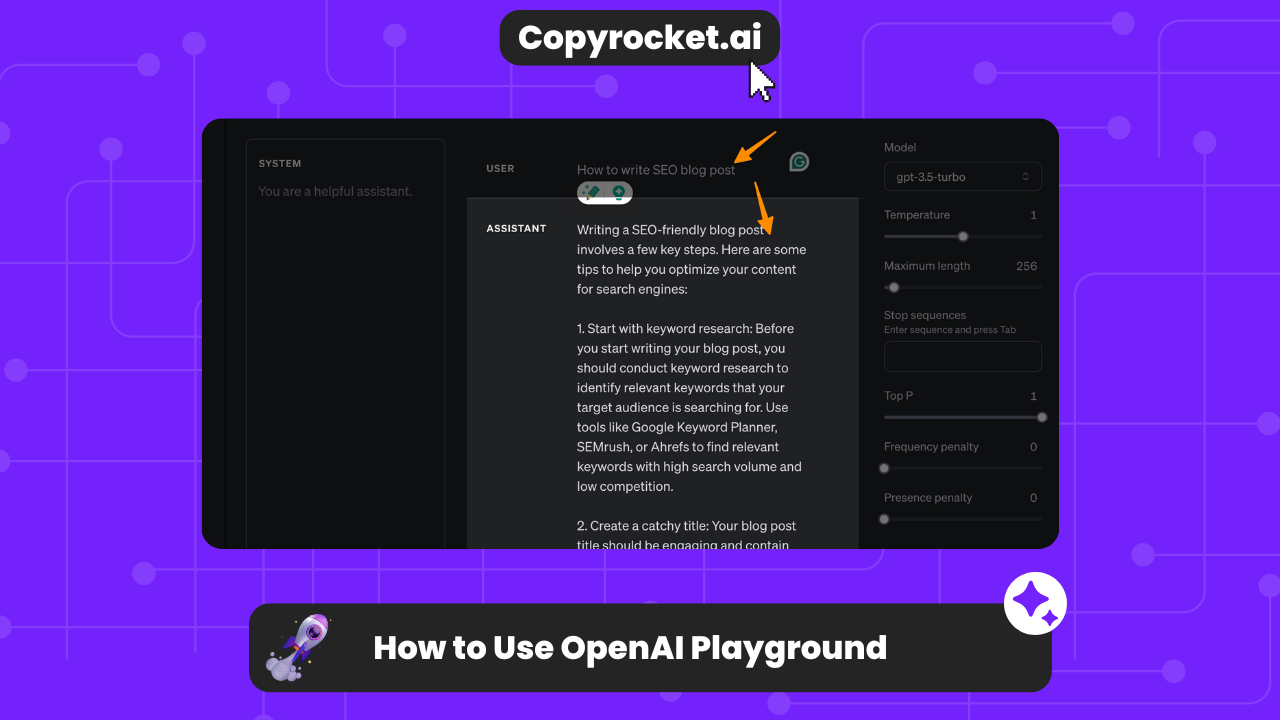Welcome to the ultimate guide on How to Use OpenAI Playground—your gateway to the revolutionary world of AI technology!
In this thrilling era, where artificial intelligence is dramatically altering our interaction with technology, OpenAI Playground stands out as an innovative platform.
It invites individuals of all backgrounds to experiment with AI models in a user-friendly environment. Regardless of your experience level, this guide is meticulously crafted to guide you through the exciting landscape of AI.
Here, you’ll learn to leverage OpenAI Playground to unleash your creative potential, explore various AI models, and gain insights into AI’s capabilities.
From generating human-like text with GPT-3.5 Turbo to coding with AI, your AI journey begins here.
This guide promises a deep dive into AI tools and technologies, ensuring that by the end, you’ll be adept at using OpenAI’s Playground, exploring various models, and even fine-tuning AI to answer questions or parse unstructured data.
Get ready to turn curiosity into knowledge as you step into the playground where innovation meets practicality!
How to use ChatGPT for Twitter (Prompts Inside)
Checkout our Free AI Tool;
About OpenAI Playground And how it differs from ChatGPT
OpenAI Playground, an innovative tool at the forefront of AI technology, serves as an interactive web-based interface that lets enthusiasts and professionals alike explore the vast capabilities of various AI models.
This platform is crafted not only for developers but also for anyone curious about AI, making it accessible to experiment with language and image-generation models without the necessity for extensive programming knowledge.
What sets it apart is its emphasis on learning by doing; the Playground equips users with resources, tutorials, and example projects, enabling them to effectively harness AI tools, including the sophisticated GPT-4, for generating text or code in natural language.
How Does it Work?
The essence of OpenAI Playground lies in its simplicity and power. Users can directly input text prompts, and in response, the AI models, including the renowned Generative Pretrained Transformer (GPT) models, process these prompts to generate compelling text outputs.
This functionality ranges from crafting essays and answering questions to generating code snippets, providing a “sandbox” environment for users to engage in deeper exploration of AI’s potential.
The platform is an invaluable resource for understanding how different AI models, tools, and technologies react to prompts, unraveling the endless applications of AI.
Difference Between ChatGPT and OpenAI Playground
| Feature | ChatGPT | OpenAI Playground |
|---|---|---|
| Primary Purpose | Interactive conversational AI | Testing and exploring OpenAI models |
| Interface | User-friendly chat interface | Code-based interface for more technical users |
| Customization | Limited to certain prompts and settings | High; allows for detailed parameter adjustments |
| Model Versions | Fixed to specific versions, like GPT-4 | Access to various models, including the latest releases |
| Real-time Information | Limited ability, mainly based on training data | Depends on the model; some may allow browsing capabilities |
| User Target | General public for wide-ranging conversations | Developers, researchers, and enthusiasts for experimentation |
| Session Memory | Conversation history is remembered within a session | Typically stateless; depends on user to maintain context |
| Integration Options | Designed for direct user interaction | Can be integrated into other applications via API |
| Output Customization | Limited control over response style | Detailed control over prompts, temperature, etc. |
| Image Generation | Can process and generate images based on descriptions | Capability depends on the specific model and version used |
ChatGPT and OpenAI Playground cater to distinct needs in interacting with OpenAI’s advanced language models.
ChatGPT focuses on human-like interactions in a chat interface, optimized for generating text based on prompts and maintaining conversational flow.
OpenAI Playground is a versatile interface for AI exploration, offering advanced settings to adjust parameters like temperature and model selection for varied tasks.
OpenAI Playground provides a more tailored and granular AI exploration experience compared to ChatGPT’s chat-oriented focus.
It serves as a gateway for AI enthusiasts to push boundaries in generating human-like text and parsing data, making it a powerful tool in AI exploration.
How to use OpenAI Playground
Step 1: Create an OpenAI Account
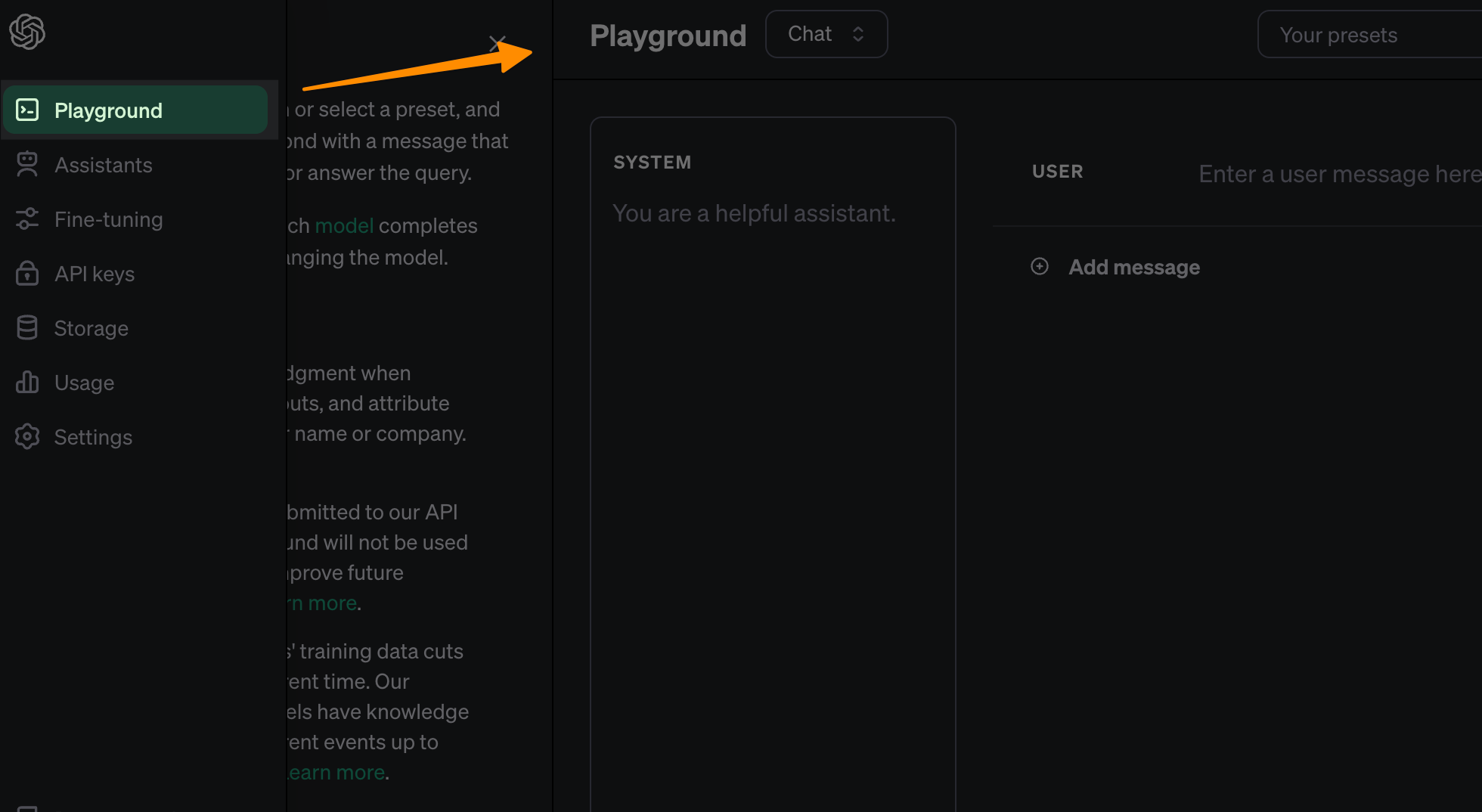
First things first, to use OpenAI Playground, you need an OpenAI account. Navigate to the OpenAI website and click on the signup button.
You can sign up using your Google or Microsoft account, making the process straightforward and convenient. Once you have signed up, log in to access the wide array of features OpenAI’s playground has to offer.
Step 2: Select Your Mode
Upon logging into OpenAI Playground, you’ll find yourself faced with a choice between different modes of interaction with the AI.
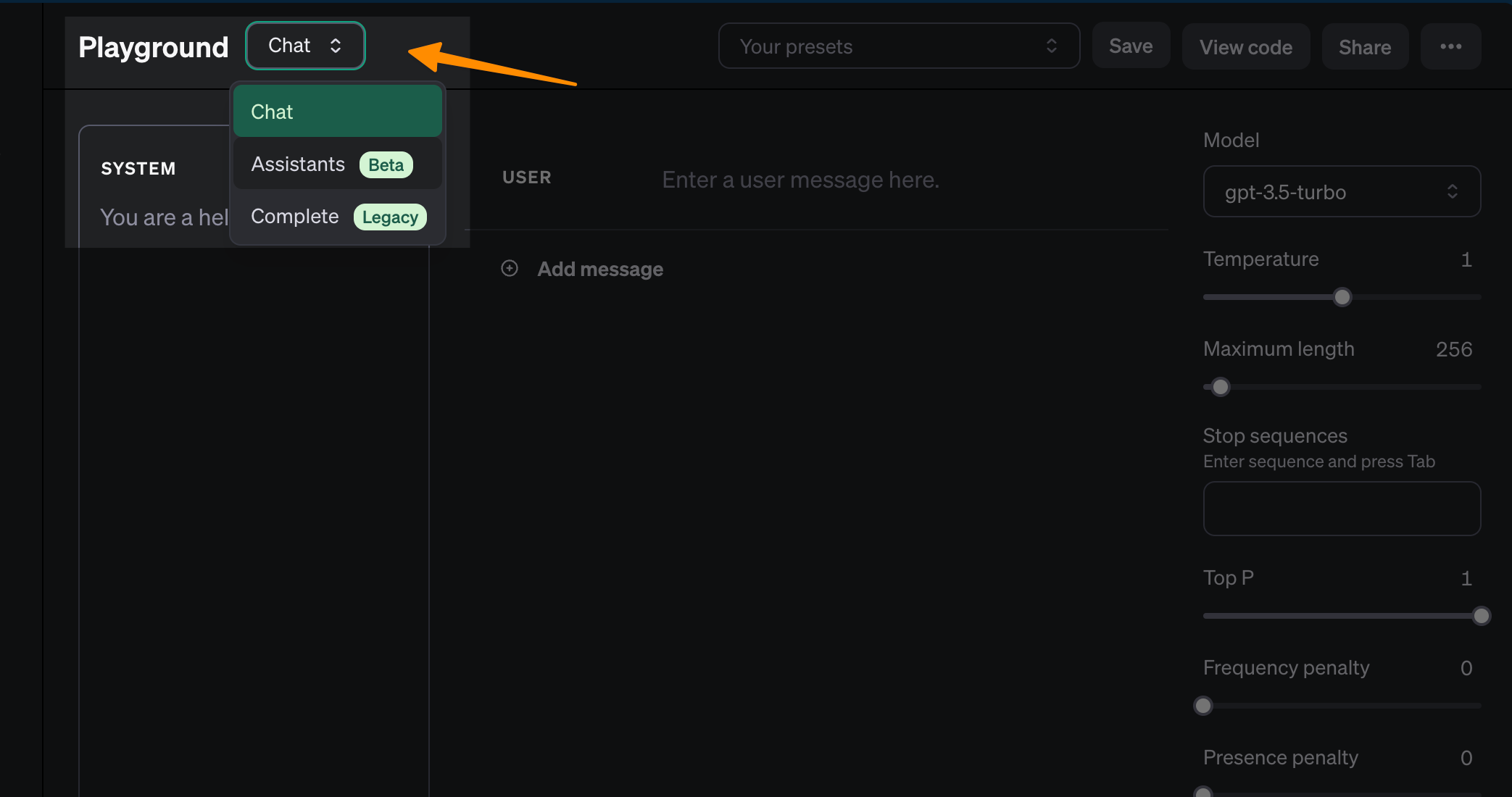
These include Chat mode for conversational responses, Assistants for query-solving, and Complete for generating text completions.
Chat mode, being the most updated, includes the latest AI advancements, though all modes offer unique opportunities to explore AI’s capabilities.
Step 3: Choose Your Model
After selecting your desired mode, the next step involves choosing an AI model. In OpenAI Playground, you’re presented with various AI models, including the GPT-3.5 Turbo in Chat mode, which are designed to cater to different needs and preferences.
Each model comes with its set of capabilities, and some may even offer different pricing tiers. Take your time to explore the differences and select one that best suits your experimental needs.
Step 4: Set Your Parameters
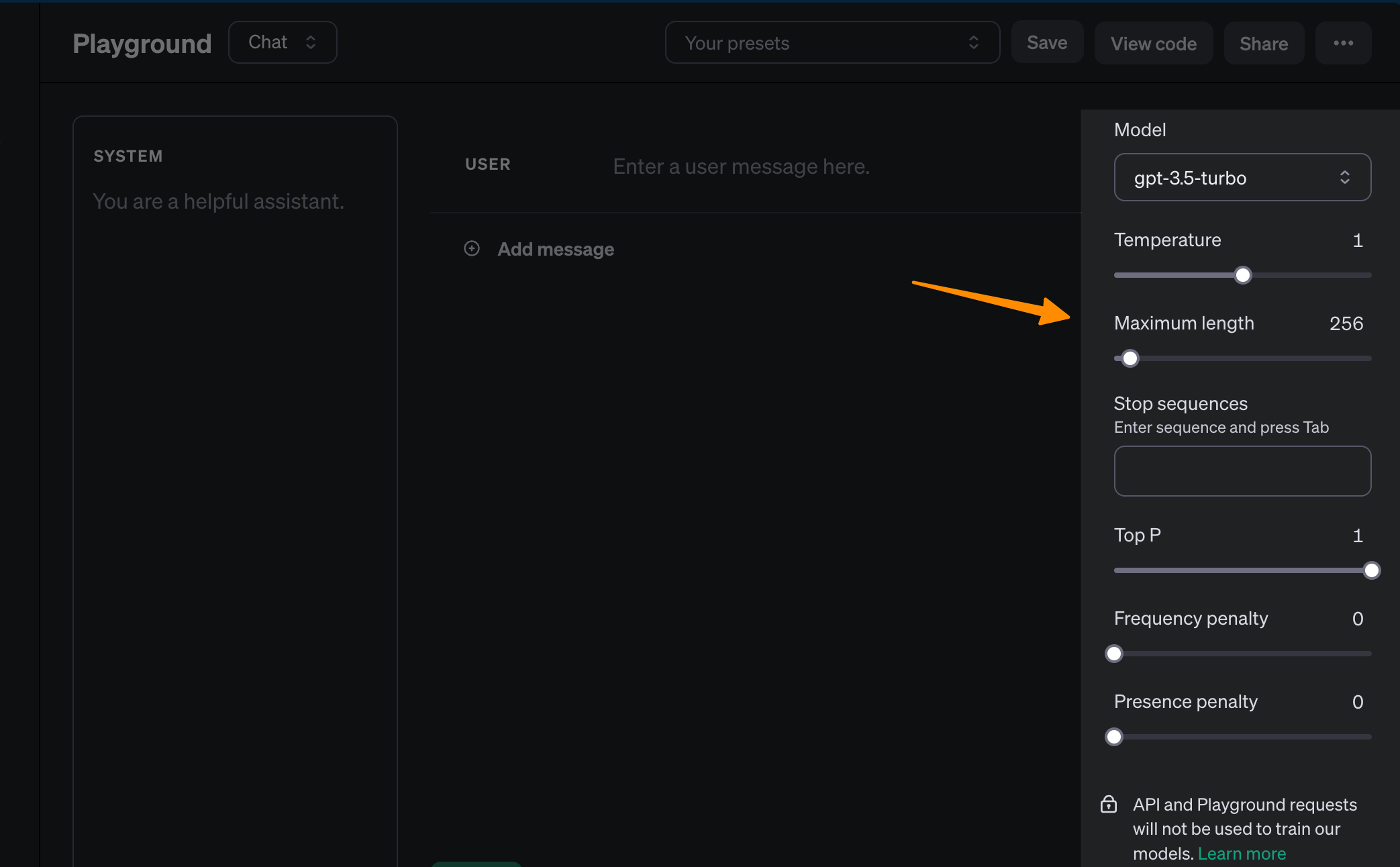
Now, it’s time to fine-tune your AI model to behave in the way you find most useful. Adjust the model parameters to your liking, including:
Temperature: Set this to control how creative or deterministic the AI’s responses should be.
Maximum Length: Specify the length limit for the AI-generated outputs.
Stop Sequences: Input words or phrases that tell the AI when to stop its response.
Frequency and Presence Penalties: Adjust these to manage the repetitiveness and relevance of the AI’s output with respect to your prompt.
These parameters allow you to custom-tailor the AI’s response to fit your specific requirements or preferences.
Step 5: Input Your Prompt
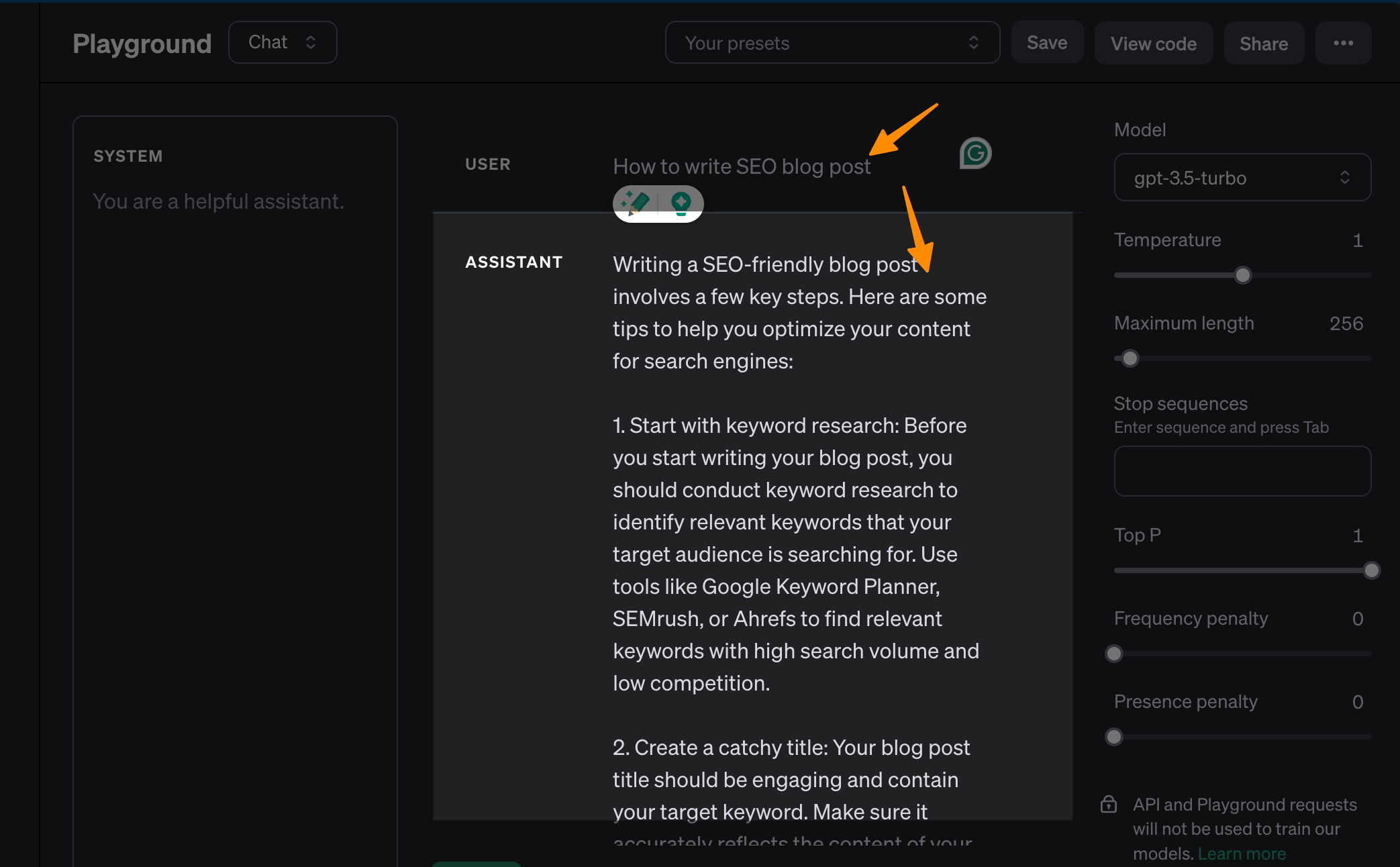
The next step involves inputting a prompt or question in the text box provided. This can be anything from a question you want answered to a statement you want elaborated on.
The AI model will use this prompt as a starting point to generate its response. Experiment with different prompts to see how the AI interprets your input and the varied responses it can generate.
Step 6: Save and Share Your Experiments
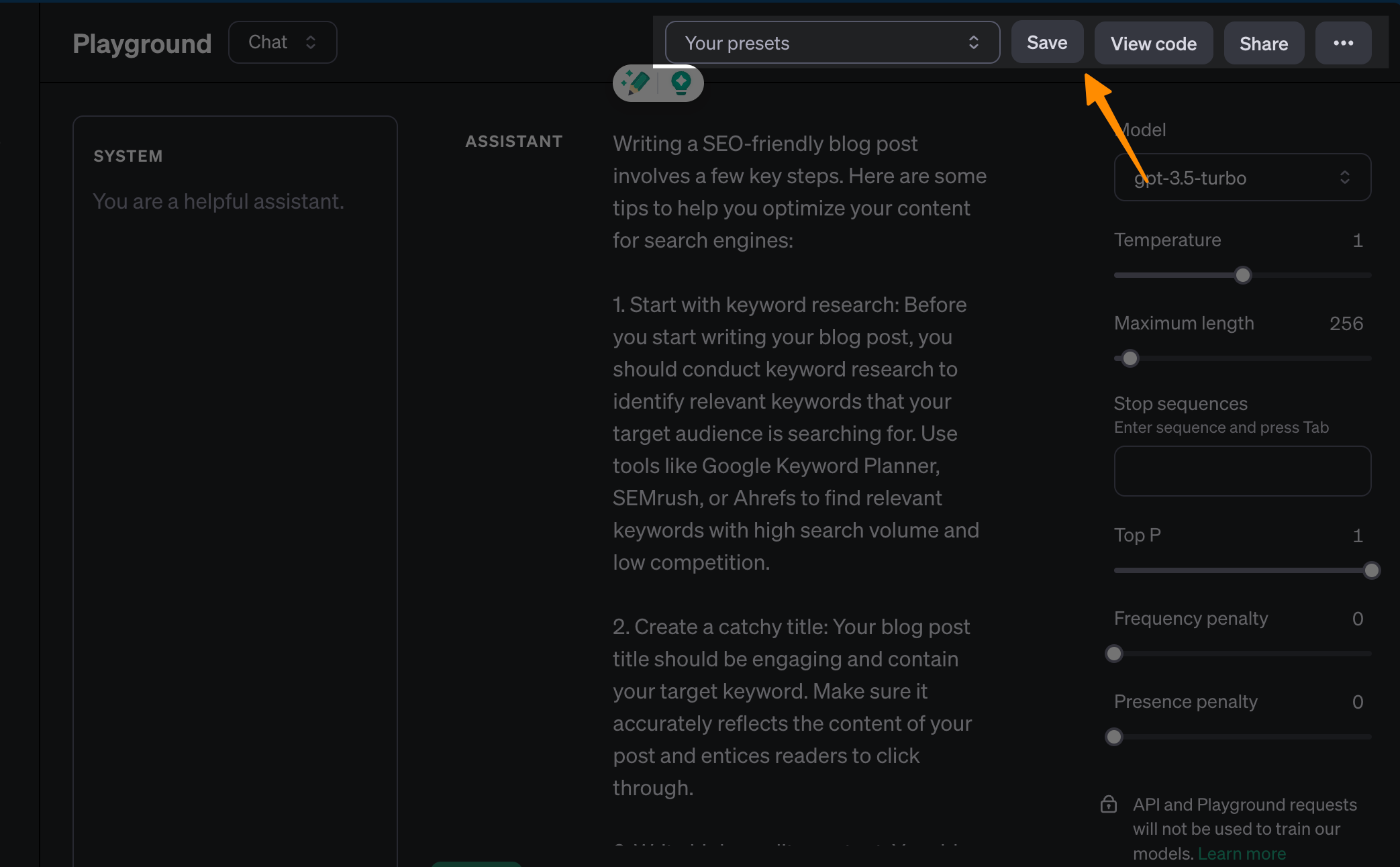
Once you’re satisfied with the AI’s response, don’t forget to save and share your experiments. OpenAI Playground offers the option to save your work so you can easily revisit it later or share it with others.
This is a great way to keep track of your AI exploration progress and collaborate with peers or mentors. By sharing, you invite feedback and other perspectives, enriching your understanding and application of AI technology.
By following these steps and experimenting with various models, parameters, and prompts, you’re set to embark on an enriching AI exploration adventure.
OpenAI Playground is a powerful tool that provides hands-on experience with cutting-edge AI technology, allowing users to generate human-like text, write code, and parse unstructured data, among other functionalities. Remember, the key to mastering AI’s capabilities lies in continuous exploration and learning.
What More You can do with OpenAI Playground
Beyond the basics of navigating and utilizing OpenAI Playground for AI-driven outputs, there’s a world of advanced features designed to deepen your engagement with AI language models.
By integrating system prompts, users can simulate complex dialogues involving system messages and user messages where the AI responds accordingly.
This feature not only enhances the understanding of how different models interpret and generate language based on varied inputs but also allows for a more structured exploration of AI’s capacity to understand and generate contextually relevant responses.
Furthermore, Playground AI offers an inventive way to experiment with different models, enabling users to compare and contrast how each model processes information and responds to prompts.
Whether it’s a simple query or a complex system prompt designed to mimic real-world interactions, the AI’s ability to generate relevant, engaging, and sometimes surprisingly insightful system messages opens up new avenues for AI application in industries ranging from customer service to creative writing.
In essence, OpenAI Playground stands as a testament to the evolving sophistication of AI language models, granting users the power to push the boundaries of what AI can achieve.
From crafting detailed user messages that prompt the AI to respond in kind, to exploring the depths of AI’s understanding and creativity, Playground AI is your sandbox for exploring the limitless potential of artificial intelligence.
Frequently Asked Questions
What is the difference between a user message and a system message in OpenAI Playground?
A user message refers to the input provided by the user, typically in the form of a prompt or question that guides the AI in generating a response. A system message, on the other hand, simulates responses from the system itself, showcasing the AI’s capability to handle and generate automatic responses based on the context provided. This distinction helps in demonstrating the AI language model’s versatility in handling both direct user queries and automated system interactions.
How can I enhance the AI capabilities of my application using OpenAI API?
To enhance your application’s AI capabilities, you can integrate the OpenAI API to access cutting-edge AI models, including language understanding and generation. This allows your application to process and respond to user messages with high relevance and creativity. Start by incorporating the API into your application, adjust the parameters to meet your needs, and experiment with different prompts to fully leverage the AI’s potential in various contexts.
Can OpenAI Playground simulate real-world interactions between users and systems?
Yes, OpenAI Playground can simulate real-world interactions through a structured approach involving user messages and system messages. By crafting prompts that mimic real-life scenarios, users can explore how the AI language model interprets and responds to various situations, thereby showcasing its capacity to generate contextually relevant and insightful responses. This feature underlines the AI capabilities of OpenAI’s models in understanding and engaging in complex dialogues, making it an invaluable tool for anyone looking to explore the extent of AI’s applicability in simulating human-like interactions.
Conclusion
In conclusion, OpenAI Playground stands as a dynamic and innovative platform that invites users to engage deeply with AI technology.
It’s a place where curiosity meets creativity, allowing both beginners and seasoned enthusiasts to truly get their hands properly dirty with AI.
By experimenting with other models, adjusting the presence penalty, and fine-tuning the temperature setting, users transform into architects of their own AI experiences.
Importantly, the Playground acts not just as a tool but as a helpful assistant, guiding users through the complexities of AI with real-time examples and responses generated from extensive training data.
Whether it’s for educational purposes, professional development, or simple curiosity, OpenAI Playground equips users with the knowledge and confidence to explore the vast potential of AI technology.


